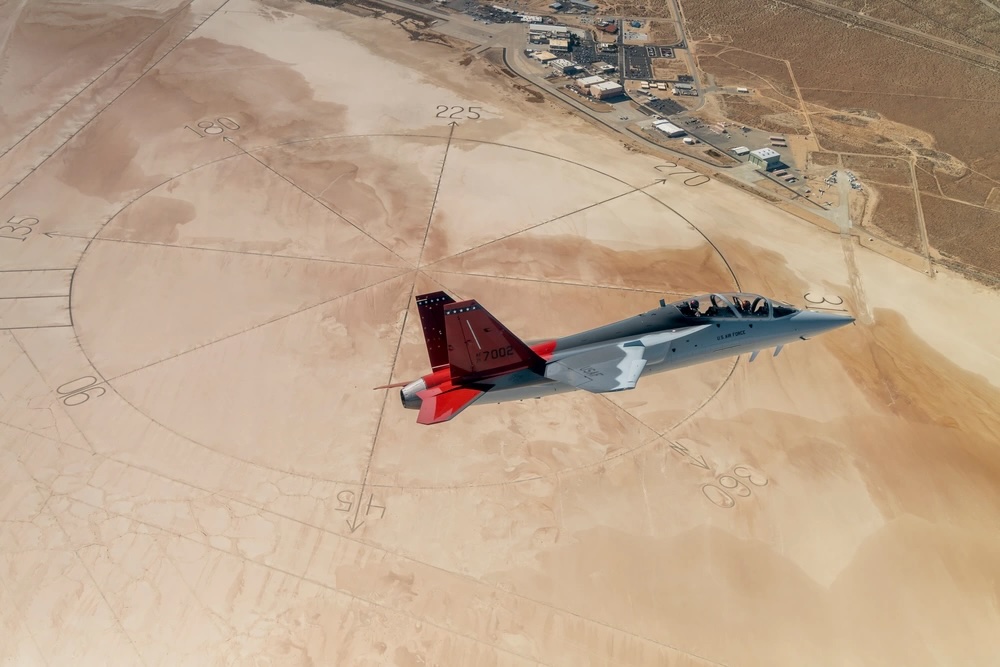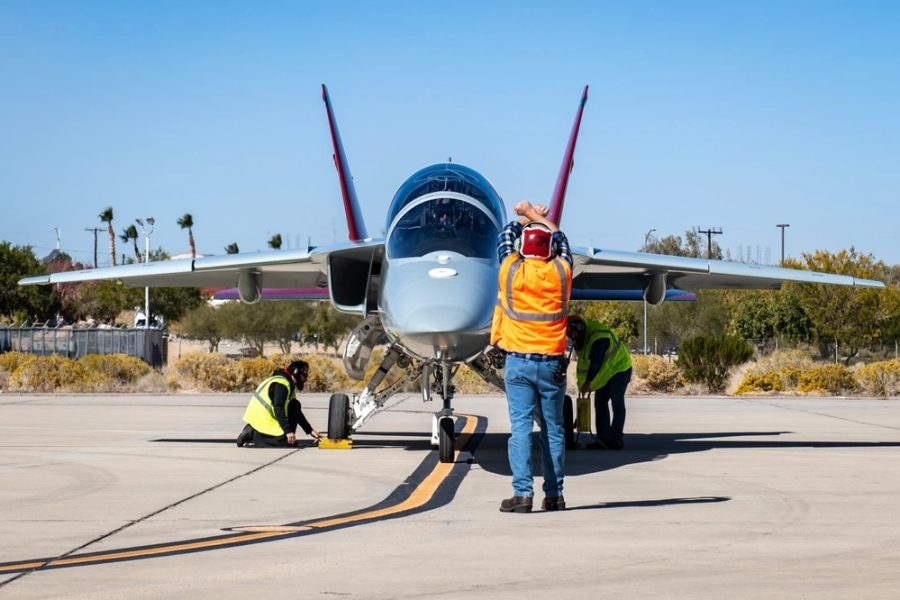The first T-7A Red Hawk landed at Edwards Air Force Base, Calif. on Nov. 8, marking the start of the developmental flight test campaign for the two-seat jet, which is meant to replace the aging T-38 as a trainer for fighter and bomber pilots.
Designated APT 2, the Boeing-made jet was the first production representative T-7 to be built, and the same aircraft that Maj. Bryce Turner flew on June 28, in the first official test flight by an Air Force pilot. A joint Boeing and Air Force crew flew the jet from the Boeing facilities at St. Louis, Mo. to Vance Air Force Base, Okla., Kirtland Air Force Base, N.M., and Luke Air Force Base, Ariz., before finally arriving at Edwards.
“This arrival marks an exciting transition into the next phase of developmental flight” Maj. Jonathan Aronoff, T-7A test pilot, said in an Air Force press release. “The T-7A gives immense capability updates that will allow the Air Force to train the next generation of combat aviators. Success of first delivery is truly a testament to the joint USAF-industry team we have in place.”

The goal of developmental flight testing is to evaluate changes made earlier in the development process and determine how and whether to refine the aircraft further. Boeing and Air Force officials told reporters in September that another T-7 designated APT 1 will join APT 2 at Edwards while APT 3 will undergo weather testing at the McKinley Climatic Laboratory at Eglin Air Force Base, Fla., before being used as a mission systems testing platform. APT 4 and 5 are due later this year.
According to the press release, test pilots have been rehearsing missions in a simulator and will now start flying up to three times a day as they try expanding APT-2’s flight envelope—the maximum altitude and airspeed in certain conditions—before testing mission systems.
The Air Force needs the T-7 to replace the 1960s-era T-38 fleet, which is becoming increasingly difficult to keep airborne. The Red Hawk is designed to be easier to maintain. Its information management and modular systems architecture are meant to help student pilots better prepare for modern aerial combat. However, the jet, which was originally due to reach initial operational capacity in 2024, has been marred by delays, including problems with flight stability, flight control software, and its ejection seats.
Even so, the Air Force may find uses for the T-7 outside of training. Breaking Defense reported on Nov. 8 that the service is considering an armed variant called the F-7 to perform light attack missions. In the meantime, the team at Edwards will evaluate the Red Hawk for its training potential.
“This is the right team to go after any challenges we find,” Col. Kirt Cassell, division chief for the Air Force T-7 program, said in a Boeing press release.
